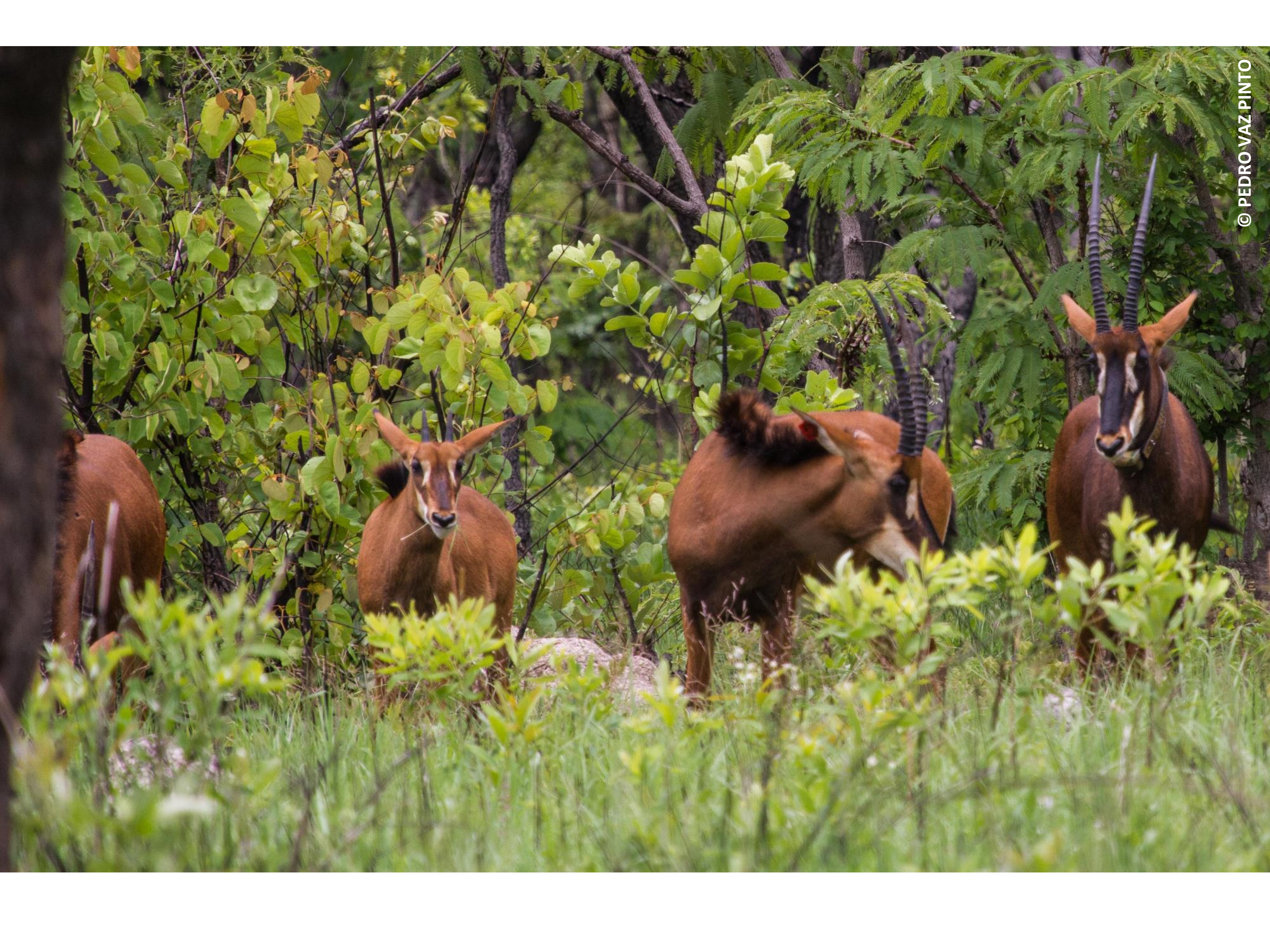PEDRO VAZ PINTO AWARDED THE INTERNATIONAL PRIZE "TERRAS SEM SOMBRA" FOR BIODIVERSITY

Pedro Vaz Pinto, researcher of CIBIO/InBIO - ISCED-Huíla, in Angola, has been awarded the 2013 International Prize “Terras Sem Sombra” for biodiversity, in recognition of his work on the conservation of the giant sable antelope, a rare, critically endangered species, which only exists in Angola.
This award is granted annually by the Historical and Artistic Heritage Department of the Diocese of Beja to three outstanding personalities or institutions in the fields of music, cultural heritage and biodiversity. In 2013, this award distinguished the work of Pedro Vaz Pinto on the conservation of the stunning and iconic giant sable antelope, which is one of the most beautiful and majestic antelopes in the world and also the national symbol of Angola.
Conservation of the Giant Sable Antelope and its importance
The giant sable antelope is an endemic species of Angola that only exists in the Malanje province. Due to the lack of reliable records of its existence since 1982, this species was thought to be extinct. Between 2002 and 2004, in the context of a project launched by the Catholic University of Angola to preserve the giant sable antelope, Pedro’s team conducted several expeditions in the Cangandala National Park, located in the vicinity of Malanje, where they found traces of the species. But it was only in 2005, that its existence was fully proven, by the use of camera traps set on the field. This achievement was internationally recognized, and Pedro was distinguished with the prestigious 2006 Whitley Award (£30.000), sponsored by the Whitley Fund for Nature, for the quality and impact of the program.
Since the 1970’s and throughout almost 30 years of civil war in Angola, the sable’s population decreased significantly and the herds that currently exist are restricted to the Cangandala National Park and the Luando Reserve. According to Pedro, “the conservation of the giant sable antelope is of the utmost importance, given that this is a critically endangered species, with only less than 100 living animals”. Considering that poaching continues to be one of the major threats posed to the survival of the sable, it is essential to inform and engage the population to be watchful and to actively take part in its monitoring and recovery strategies.
An ambitious an groundbreaking conservation project
The conservation project coordinated by Pedro Vaz Pinto has an innovative and broad reaching character, especially because of its underlying approach, which articulates diversified methodologies, including state-of-the art research techniques. The researcher states that his team’s work “has been carried out in collaboration with the Angolan Ministry of Environment, and benefits from a strong investment in scientific research, the cooperation of resident communities and significant support from the private sector”. The project combines extensive fieldwork, involving for instance the translocation of animals and the promotion of breeding programs in captivity, with the use of modern molecular analyses. This work will provide detailed genetic information on this species, giving an insight into its origins and ecology, including its reproductive capacity, population structure and elements underpinning its migratory and selection rates.
Last May, the research project ‘Genome of the Giant Sable Antelope’ was presented at a scientific meeting at Lubango, Angola, organized by Instituto Superior de Ciências da Educação da Huíla - ISCED-Huíla, in collaboration with CIBIO/InBIO to celebrate the effective beginning of the scientific and academic partnership between these institutions, fostered by the newly created twin lab integrating CIBIO/InBIO and the Herbário e Museu de Ornitologia do Lubango (HMOML).
A man on a mission
When asked about the meaning of this distinction, Pedro mentions that “this award is very prestigious and it is always rewarding to know that our work is internationally acknowledged”. But he quickly adds that “the most important aspect is that it provides an opportunity to promote our project and raise awareness to the extinction risk that threatens the sable”.
Pedro believes that within the next years “the scientific research component [of the project] will play an increasingly relevant role in this conservation project, especially in what concerns genetics, which may be crucial for the recovery of the animal”. Actually, this work has already brought up new scientific data, namely on the reproductive capacity of hybrid specimens. In one of the herds living in the Cangandala National Park there are hybrid individuals, resulting from the interbreeding between giant sable and roan antelope. This is a rare phenomenon, involving the interbreeding of two species, which would not come into contact with one another if the conditions were more favorable. This is one of the most surprising aspects of the project and which will be further studied.
Pedro is certainly aware that there is a long road ahead in what comes to ensuring the future of the giant sable antelope, and is fully committed to the conservation of this magnificent animal.

Together with Pedro, this year’s awardees are the Italian classical singer Enzo Dara (Advancement of Music) and the Association of Portuguese Archaeologists (Protection of Cultural Heritage). This year, the initiative was sponsored by Her Royal Highness, Infanta Pilar of Spain, Duchess of Badajoz, who chaired the award ceremony that took place on the 6th of July, at Casa da Cultura da Comporta.
Click here to find out more about this the Prize (information available only in Portuguese).
Click here for more details on Pedro Vaz Pinto’s work and his reports on the work carried out at Cangandala National Park (information available both in Portuguese and English).